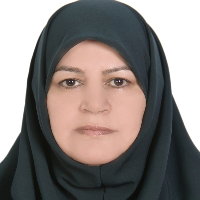Prevalence of metabolic syndrome among students of Lorestan University of Medical Sciences during 2011-1012
Author(s):
Abstract:
Introduction
Metabolic syndrome is a combination of disorders such as: central obesity, hypertension, increased blood glucose and impaired blood lipids. This study was carried out to determine the prevalence of metabolic syndrome among students of Lorestan University of Medical Sciences during 2011-2012. Materials and Methods
This study was a cross-sectional survey carried out on 214 students in an age range of 19-27 years. Subjects filled demographic questionnaire and their fasting blood samples were collected to measure their TG, FBS and HDL cholesterol. Then metabolic syndrome was defined having at least three of the ATP III criteria as the following: triglycerides ≥150 mg/dL; high blood pressure (systolic blood pressure≥130 mmHg or diastolic blood pressure ≥ 85 mmHg); fasting glucose≥110 mg/dL; waist circumference ≥102 cm in men and ≥ 88 cm in women and HDL<40 mg/dL in men and<50 in female. Results
Prevalence of metabolic syndrome among students was 1.9%. And 45.8 % of subjects had one component of metabolic syndrome. The most prevalent metabolic syndrome components had high fasting blood sugar (16.8%) and low HDL (39.7%). Conclusion
The results showed that the important metabolic syndrome risk factors among students were high fasting blood sugar and low HDL. Acknowledgment: This is no conflict of interestKeywords:
Language:
Persian
Published:
Medical Journal of Mashhad University of Medical Sciences, Volume:57 Issue: 8, 2015
Pages:
918 to 925
https://magiran.com/p1361514
سامانه نویسندگان
مقالات دیگری از این نویسنده (گان)
-
Curcumin alleviates inflammatory effects of ketamine anesthesia in postnatal rats
Soroush Afshar Ghahremani, Abbas Raisi *, Sohrab Minaei Beirami, Houman Kahroba, , Omid Dezfoulian, Vahideh Tarhriz
Veterinary Research Forum, Sep 2024 -
The Direct and Indirect Effects of Macronutrients on Energy Intake in Lactating Mothers
Soodabeh Zare, Anoshirvan Kazemnejad *, Amir Hamta,
Journal of Pediatric Perspectives, Apr 2022


